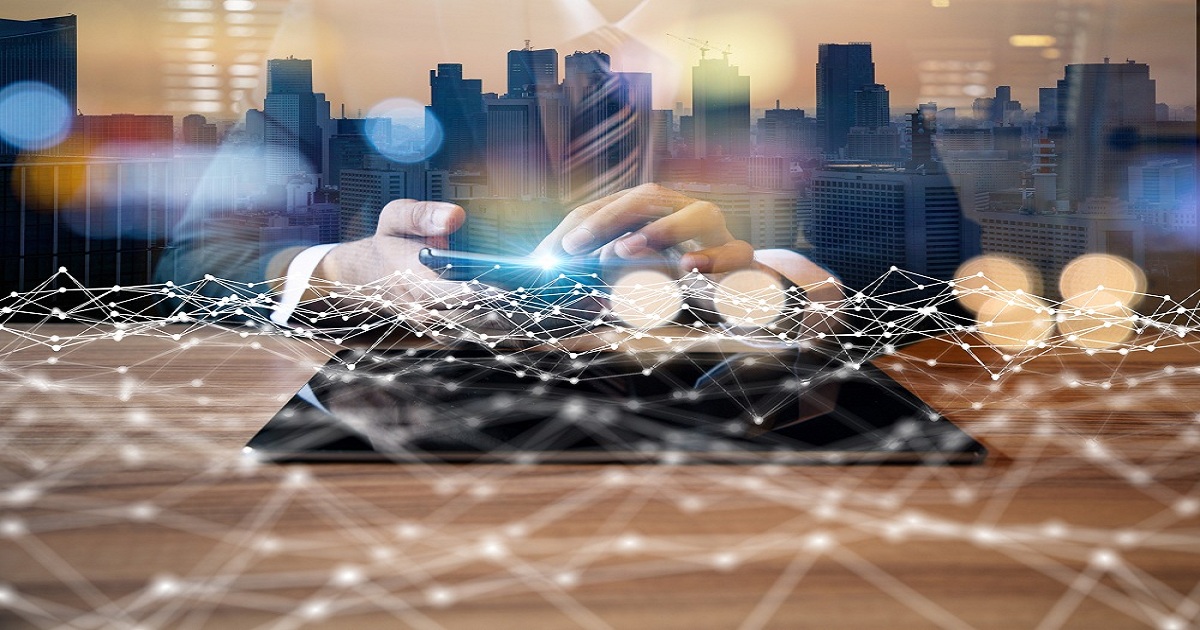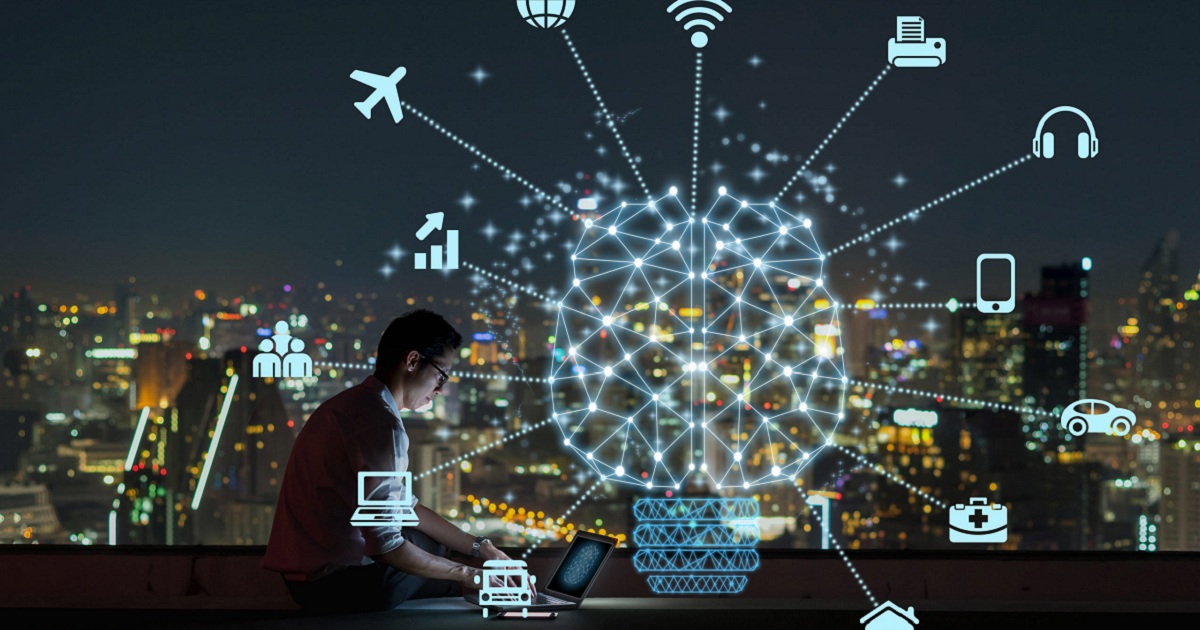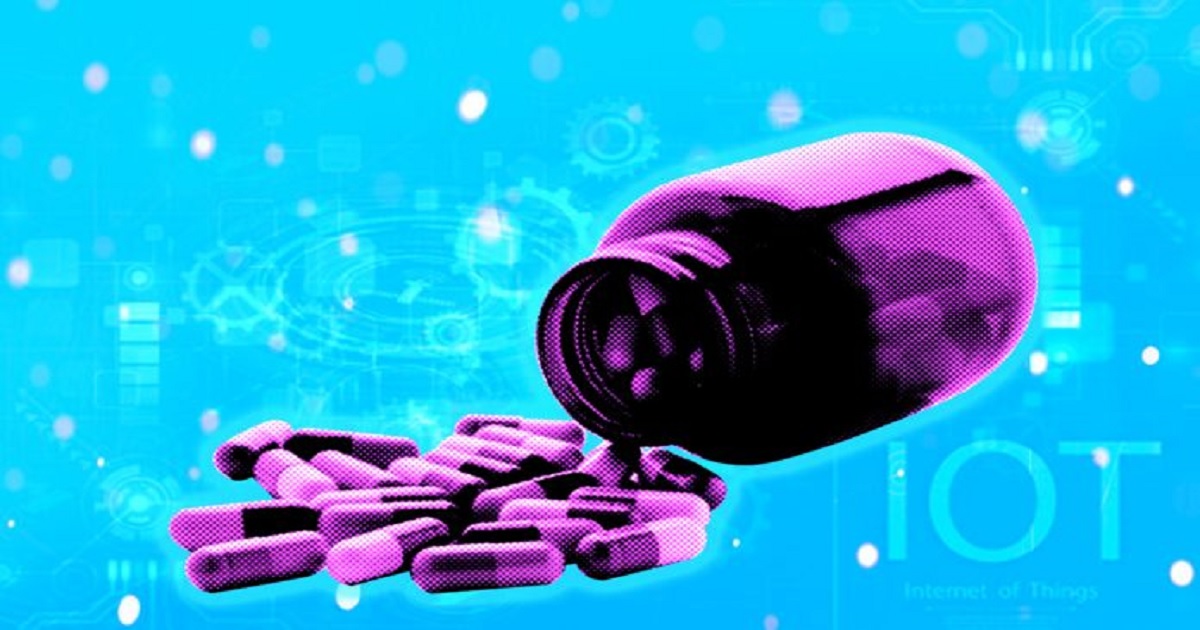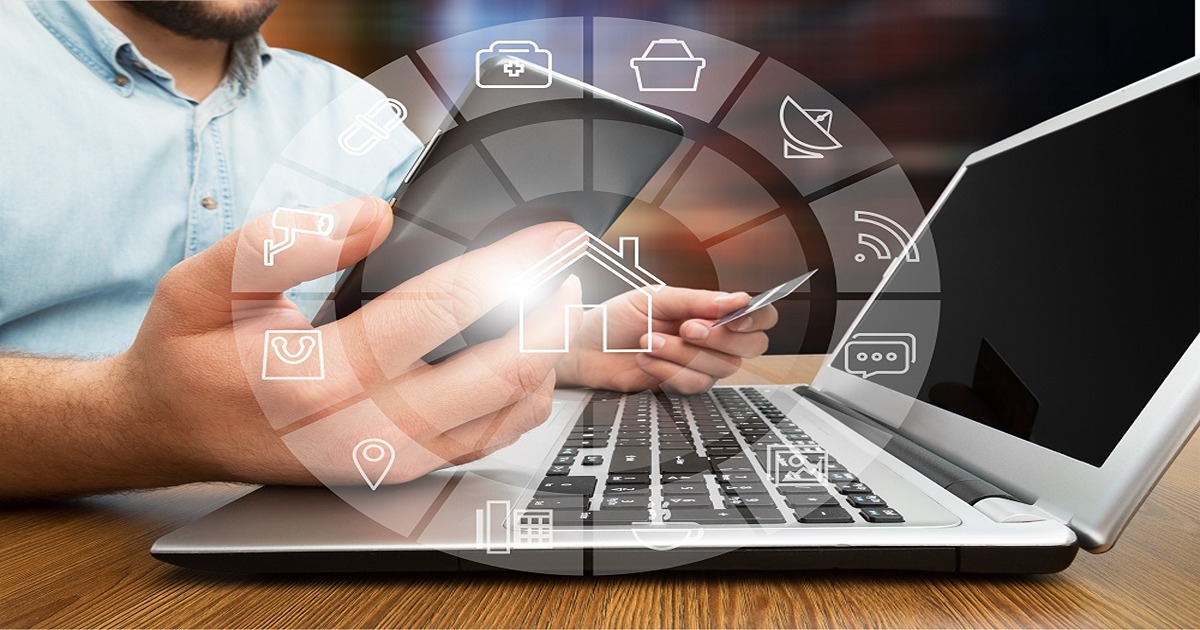
Enterprise Iot
Article | May 11, 2023
IoT use cases span a variety of sectors and businesses. A typical Internet of Things (IoT) solution consists of a large number of heterogeneous IoT devices with sensors that generate data in a variety of formats at varying rates, which is then processed and analyzed to derive insights. In addition, IoT devices can connect to a network directly or through a gateway device, allowing them to communicate with one another and with cloud services and applications.
Create a layered architecture
An organization's IoT solution's architecture outlines its overall layout, including its physical components (such as sensors and actuators) and virtual components (like services and communication protocols). IoT system complexity can be managed by utilizing a modular strategy that divides the architecture into several layers and focuses on each tier separately.
IoT architectures have a tendency to outsource work to the edges of IoT networks (where the physical devices connect to the cloud). This aids data-driven IoT applications by lowering latency, enhancing privacy, and lowering bandwidth costs.
Devices layer
The device layer components include physical sensors and actuators that link to IoT devices and the IoT devices themselves. Although sensors and actuators are often not considered "smart" devices, they frequently connect to the architectural elements with higher computing power, either directly or indirectly (with the aid of gateway devices).
These devices often use over-the-wire protocols like Ethernet or wireless protocols like Bluetooth, Zigbee, WiFi, LTE, or RFID to transmit data.
Edge layer
The analytics and pre-processing services that are offered at the network's edge are included in the concept of the edge layer. This layer acts as a central integration point for subsequent layers (devices layer). For the upstream layers, it offers routing and device control features. In addition, this layer can be connected to pub-sub systems to convey events and listen in on them.
The size and heterogeneity of the devices and connectivity involved make designing data-driven IoT solutions hard. This article discusses some techniques for creating safe, adaptable, and scalable IoT architectures.
Read More

Industrial IoT, IoT Security
Article | July 12, 2023
We live in the age of technological advancement and progress is happening at an unprecedented speed. With newer technologies emerging every day, it is unreasonable to not be intrigued by their implications on business. Artificial Intelligence and the Internet of Things are two independent technologies that are changing the face of several industries, one advancement at a time. While Artificial Intelligence promises to automate and simplify everyday tasks for humans, the Internet of Things is rapidly bridging the gap between physical and digital. The convergence of these two technologies promises to simplify lives through connected devices.
This convergence has already been witnessed in several industries and is being hailed as the Artificial Intelligence of Things or AIoT. Experts across industries claim that Artificial Intelligence of Things is set to redefine the future of the industry and mold intelligent and connected systems.
Applications
The Artificial Intelligence of Things is a congruence of AI and IoT infrastructures being used to achieve several applications across industries more accurately and efficiently. We already know that IoT generates scores of data, but this data is pretty useless in its raw form, it the organization, analysis, and interpretation of the data that makes it invaluable. Manually parsing through all of that data can take months given the sheer volume of it. This is where AI comes in. Modern AIs are programmed to efficiently handle large amounts of data to turn them into coherent pieces of information. Together, IoT and AI make for a great technological tool for business. Take a look at some other applications of AIoT in business.
Marketing
Good marketing comes from a series of well informed and well-researched decisions. For example, deciding on where the budget is allotted, what market strategy is put into action, or which campaign is prioritized. While human decisions can be fallible, most businesses today cannot afford to make big mistakes. This is where AIoT turns into a big help. Through the Artificial Internet of Things, marketers can get reports about market trends, probabilities, customer behavior, and more, most of these in real-time. These reports help marketers make informed decisions that are much likely to result in success.
Drones
Drones are one of the biggest advancements of IoT technology. In fact, drones are so popular with such varied applications, that drones can be talked of as a separate technology in themselves. These flying machines were originally invented for military purposes such as surveillance or weapon deployment but markets have rapidly found utility in drones for many other purposes. Today, they are being used as delivery bots, nature conservation, surveillance mechanisms, research tools, safety equipment, field substitutes, agriculture, geo-mapping, and a lot more.
With AIoT, drones have become smarter, more adaptable, and way more useful. As Artificial intelligence allows drones to make minor decisions, their applications have gotten wider and more sophisticated. In a brilliant use case of AIoT, a drone enthusiast named Peter Kohler has started the Plastic Tide Project which uses drones to locate plastic on the ocean surfaces. The drones are powered by AI which allows them to locate plastic and not other elements like marine life or corals. These drones then hover over the plastic waste and speed up the ocean cleaning process.
Drones can be used to map farmlands, determine the optimum farming processes and schedules, count the cattle, monitor their health, and even undergo certain physical tasks in agriculture, all thanks to the Artificial Intelligence of Things.
AR/VR
Augmented Reality and Virtual Reality are both heavily data-dependent technologies. There cannot be a convincing virtual reality unless there is data available for creating the said simulation. AR and VR have both found applications in several industries like healthcare, gaming, training, education, design, and manufacturing. Most of these applications fall in the critically important category and therefore, the AR or VR must be accurate to the minutest detail. This can only be achieved with mounds of data from the actual reality. With the help of IoT, this data is not accessible, and AI interprets it in a way that it can be turned into several different formats.
Infrastructure
One of the most useful applications of AIoT has been infrastructure. Artificial Intelligence of Things has fuelled innovation and planning for smart cities across the world. With the open data available for urban planning, cities are now becoming safer and more convenient to live in. AIoT has also made it possible to optimize energy consumption and ensure safer roadways through traffic surveillance. With smart energy grids, smart streetlights, and smart public transport, energy consumption and carbon emissions are both controlled.
Moreover, AIoT has given a whole new life to urban design, and now comfort and aesthetics do not have to be sacrificed for convenience.
Energy
As we discussed above, Artificial Intelligence of Things is instrumental in optimizing energy consumption in urban areas. However, the applications of AIoT in the energy sector are not limited to smart cities. Many utilities providers across the globe are already gearing up to incorporate AIoT in their process. The expected benefits from the Artificial Intelligence of Things range from improved grid management, power quality, reliability, and restoration resilience to enhanced cybersecurity and better integration of distributed energy.
Most utilities providers have still not adopted the new technology but with the increasing complexity of grid management and higher customer experience demands, there is no denying that they will have to deploy AIoT solutions to tackle these.
Robotics
In layman’s experience robots are either extremely sophisticated machines from sci-fi that undertake every task humans can and more, or they are these clunky things that can pass you the butter. In practice, however, robotics is a lot more practical than these ideas. Today, robotics is at the forefront of AIoT applications.
The Artificial Intelligence of Things is being used in robotics for several applications such as surgical procedures, manufacturing, and even first aid. In healthcare specifically, AIoT powered robots are taking huge leaps. Robotic surgery eliminates the chance of human error and offers a much more precise surgical experience with minimum invasion. This enhances the success rate of surgery and aids faster recovery in patients.
Logistics
The convergence of AI and IoT has made a huge impact on logistics as it is now possible to automate the entire process, track the goods, as well as monitor the entire trajectory from deployment to delivery. With the addition of drones and robotics, even the last mile delivery can be automated with zero human intervention. This makes for faster delivery, better customer experience, as well as a well-designed supply chain management system.
Industrial
As the concept of adding smart sensors to physical objects emerged in the 1980s, a new term was coined a decade later—Industrial Internet of Things. IIoT is now a huge phenomenon of automating and optimizing industrial operation technologies across the globe. As IIoT is deployed in several factions of the industry including manufacturing, supply chain management, human resources, and energy management, these devices and sensors generate a massive amount of data daily. The data generated from even a single process can be dizzying, and this is where AI makes a difference. AI can not only manage this data but also find the relevant points of data and analyze it for business purposes.
Edge Computing
Artificial Intelligence has given way for another technology i.e. Edge computing. Edge computing allows a device to process data itself rather than rely on remote data servers to do so. It may seem like a small feat but think of the possibilities it offers—drones don’t have to be connected to find their way, smart appliances can interact with each other without a shared network, and thermostats can change the temperature based on your past preferences automatically.
Edge computing is by no way a new technology but, in the future, it offers huge possibilities like smart automobiles and aircraft, or even robots in every home.
Frequently Asked Questions
What are the examples of Artificial Intelligence?
Some of the most common examples of Artificial Intelligence are Google Maps and Uber. The AI allows you to find routes to any destination and even hail rides there.
How does AI help IoT?
Artificial Intelligence can comb through millions of data points in seconds to come up with patterns and analyze them. As IoT generates a lot of data continuously, AI is a powerful and complementary technology that helps IoT.
Is IoT related to Artificial Intelligence?
Internet of Things and Artificial Intelligence are two separate technologies that interact with each other well as their functions aid each other progress. AI helps with the data generated by IoT, and IoT provides relevant data for AI to analyze.
{
"@context": "https://schema.org",
"@type": "FAQPage",
"mainEntity": [{
"@type": "Question",
"name": "What are the examples of Artificial Intelligence?",
"acceptedAnswer": {
"@type": "Answer",
"text": "Some of the most common examples of Artificial Intelligence are GoogleMaps and Uber. The AI allows you to find routes to any destination and even hail rides there."
}
},{
"@type": "Question",
"name": "How does AI help IoT?",
"acceptedAnswer": {
"@type": "Answer",
"text": "Artificial Intelligence can comb through millions of data points in seconds to come up with patterns and analyze them. As IoT generates a lot of data continuously, AI is a powerful and complementary technology that helps IoT."
}
},{
"@type": "Question",
"name": "Is IoT related to Artificial Intelligence?",
"acceptedAnswer": {
"@type": "Answer",
"text": "Internet of Things and Artificial Intelligence are two separate technologies that interact with each other well as their functions aid each other progress.AI helps with the data generated by IoT, and IoT provides relevant data for AI to analyze."
}
}]
}
Read More

IoT Security
Article | June 28, 2023
Pharma is big business, but what it’s not generally recognized is, in large part, a manufacturing business with complex supply chains, finicky chemical processes and products that have to meet stringent quality controls. Few of those outside the industry think about how drugs are made safely, efficiently and at scale with reliable quality and in precisely measured doses. Even more interesting is the simple fact that pharma often produces sophisticated drugs using manufacturing processes that are decades out of date, and which are being phased out in comparable industries, such as chemical manufacturing.
Read More

Enterprise Iot
Article | July 13, 2022
Edge computing enables the IoT to move intelligence out to the edge. If organizations have a lot of data and need to use it, they should do so in end-to-end paths, environments with lots of sensors, or environments where a lot of data is generated at the edge, thanks to the Internet of Things (IoT) and edge data sensing. Additionally, traditional methodologies fall short of the necessary standards when dealing with real-time information and the growing amount of unstructured data, which includes a sensor and IoT data. For management, power concerns, analytics, real-time needs, and other IoT situations, speed and high-speed data are essential elements. This enables edge computing to handle data.
The Internet of Things (IoT) benefits from having compute capacity close to the location of a physical device or data source. IoT device data needs to be processed at the edge rather than traveling back to a central site before that analysis can be done in order to react quickly or prevent concerns. For the data processing and storage requirements of IoT devices, edge computing serves as a local source.
Benefits of Using IoT and Edge Together
The connection between IoT devices and the main IT networks has less latency.
Greater operational efficiency and quicker response times.
Network bandwidth improvement.
When a network connection is lost, the system continues to run offline.
Utilizing analytics algorithms and machine learning, local data processing, aggregation, and quick decision-making are possible.
Industrial IoT, often known as IIoT, is the application of IoT in an industrial setting, such as factory machinery. Consider the lifespan of the large, factory-used machinery. Equipment may be stressed differently over time depending on the user, and malfunctions are a regular aspect of operations.
The parts of the machinery that are most prone to damage or misuse can be equipped with IoT sensors. Predictive maintenance can be performed using the data from these sensors, cutting down on overall downtime.
Because IoT devices can be used as Edge Computing, the line between IoT and Edge Computing can occasionally be razor-thin. However, the most significant difference is the ability not only to compute data locally (in real-time) but also to sync that data to a centralized server at a time when it is safe—and feasible—to send.
IoT and edge computing are both here to stay since they fulfill crucial societal and commercial needs.
Read More